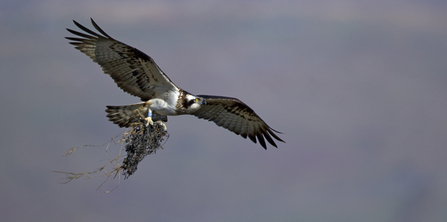Nora
Unfortunately, Nora has not returned this year. We now need to resign ourselves to the fact that she has probably come to grief sometime after leaving the Dyfi last August and has died.
Nora is not satellite tagged so we may never know the reason for her downfall. She may have died on her migration back to Africa last year, on her way back this March, or somewhere in between. We just don't know. In the recent blog "I'll be Back", I tried to give some estimation of the chances, in terms of percentages, of particular ospreys returning safely. Nora, as an adult breeding osprey, would have an approximate success rate of returning of around 90%. It looks as if lady luck has been against her and that she has been one of the 10% of adult ospreys that fail to return to the UK each year.
Yes, there is some remote chance that she has been blown so far off course that she can't make it back to the Dyfi. Or that she has returned and bred with another male elsewhere. What we know about osprey ecology and migration, however, tells us that these are remote possibilities at best. And to answer many questions we've received, the chances of her staying in Africa and taking a 'year off' in 2013, are as close to zero as you can get. An osprey's urge to return and breed is far too strong for that.
A red kite looks on as Nora starts her nest duties in 2011








